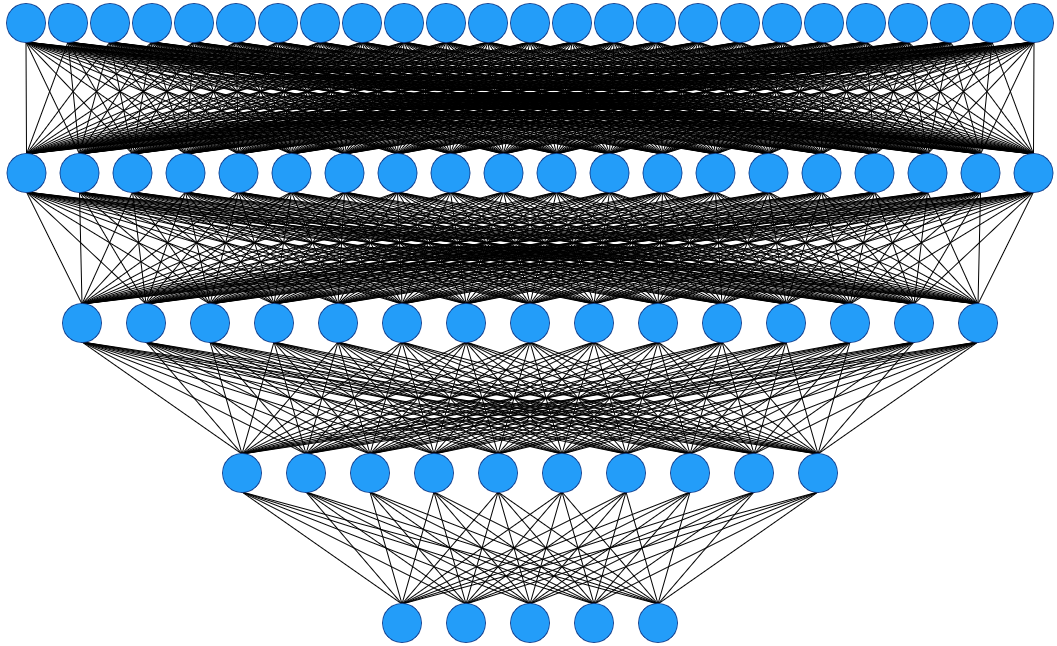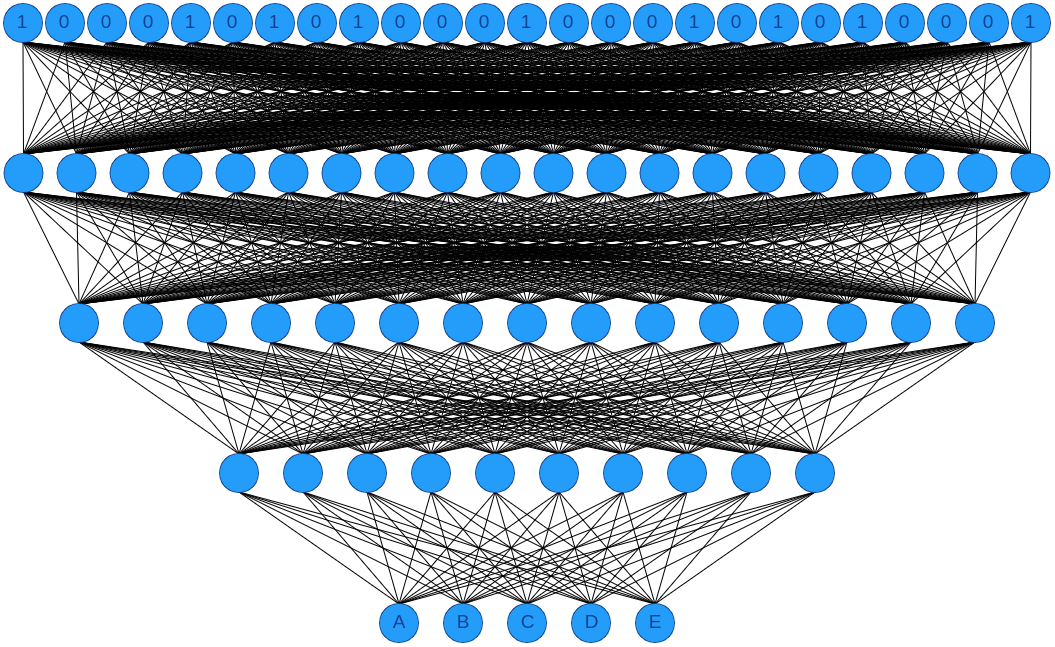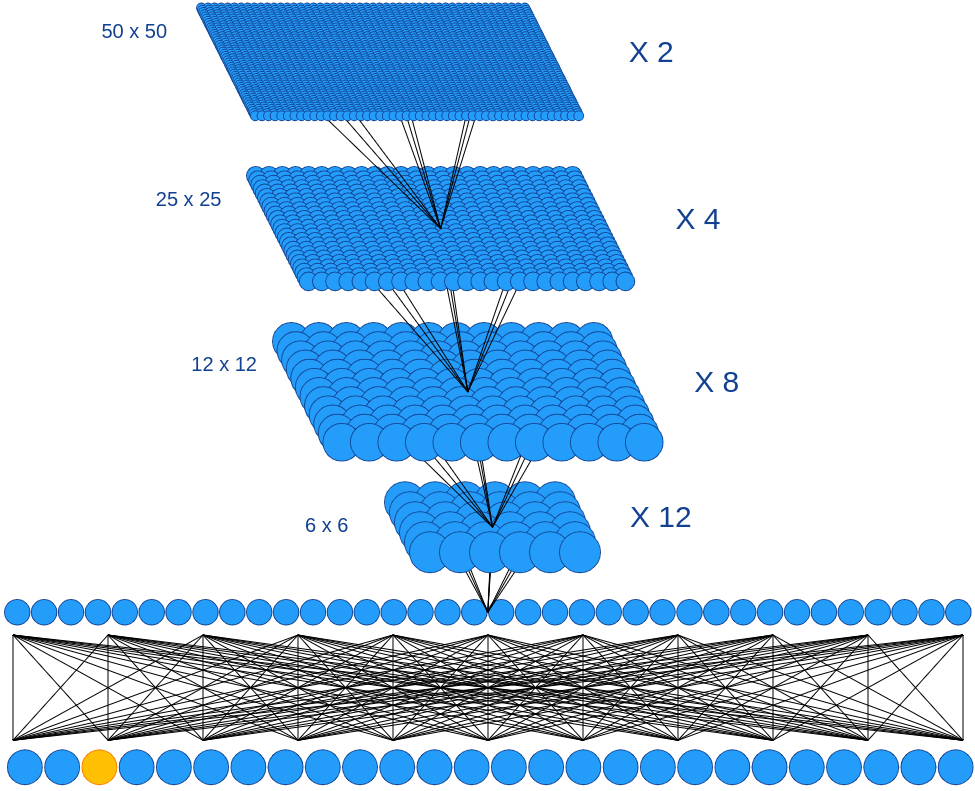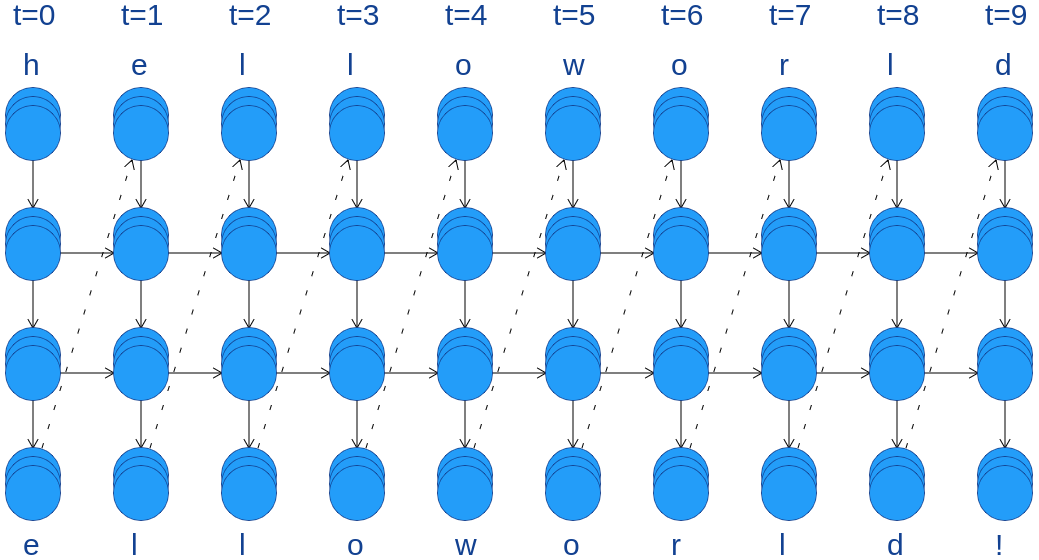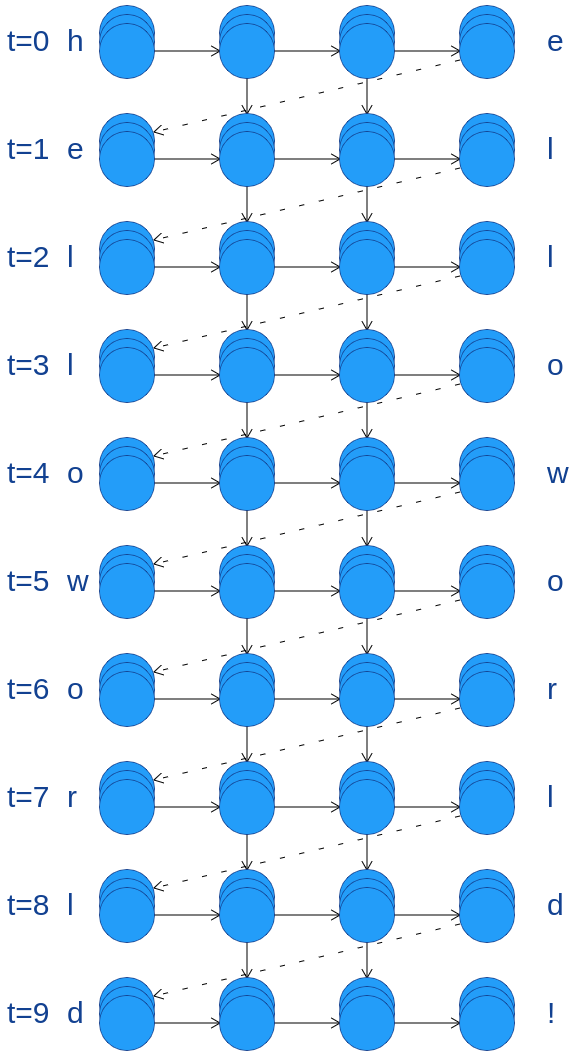Build Your Own Neural Newtork Design
Vanilla Javascript graphic library to design neural networks on HTML5 canvas
This designer can handle 3 types of neural networks:
- Multilayer Perceptrons (MLP)
- Convolutional Neural Networks (CNN)
- Recurrent Neural Network (RNN)
The only thing you need is an HTML Canvas:
<canvas id="canvas" width="1100" height="1200" style="background-color: white;"></canvas>
Then, you can instantiate your neural network builder by passing the canvas as parameter:
let neuralNetworkBuilder = new NeuralNetworkBuilder(canvas);
You're now ready to design any kind of neural network among those mentioned above.
First step, instantiate your new neural network:
let neuralNetwork = neuralNetworkBuilder.build("mlp");
Then, you have two choices. The argument of the function addLayer is the numer of neurons for each layer
neuralNetwork.addLayer(25);
neuralNetwork.addLayer(20);
neuralNetwork.addLayer(15);
neuralNetwork.addLayer(10);
neuralNetwork.addLayer(5);
neuralNetwork.define([25, 20, 15, 10, 5]);
When your neural network is ready, you can draw it to your canvas
neuralNetwork.draw();
You can assign values to neuron using its value parameter:
let input_array = "1000101010001000101010001";
for(let i = 0; i < input_array.length; i++) {
neuralNetwork.layers[0].neurons[i].value = input_array[i];
}
let output_array = "ABCDE";
for(let i = 0; i < output_array.length; i++) {
neuralNetwork.layers[neuralNetwork.getNbLayers()-1].neurons[i].value = output_array[i];
}
In this example, we assign values to the input neurons and the output neurons.
First step, instantiate your new neural network:
let neuralNetwork = neuralNetworkBuilder.build("cnn");
Then, you have two choices. The arguments of the function addLayer are:
- x - dimension
- y - dimension
- Number of channels
neuralNetwork.addLayer(50, 50, 2);
neuralNetwork.addLayer(25, 25, 4);
neuralNetwork.addLayer(12, 12, 8);
neuralNetwork.addLayer(6, 6, 12);
neuralNetwork.addLayer(36);
neuralNetwork.addLayer(26);
neuralNetwork.define([[50, 50, 2], [25, 25, 4], [12, 12, 8], [6, 6, 12], [36, 1, 0], [26, 1, 0]]);
You can also activate a neuron in your drawing by the activate function:
neuralNetwork.layers[neuralNetwork.layers.length-1].neurons[0][2].activate();
In this example, we activate the third neuron of the last layer, the output layer.
When your neural network is ready, you can draw it to your canvas
neuralNetwork.draw();
First step, instantiate your new neural network:
let neuralNetwork = neuralNetworkBuilder.build("rnn");
Then, you have define your neural network with the define function. The arguments are:
- The length of the serie you want to display
- The number of layers bewteen the input layer and the output layer
- (optional) The data serie you want to display to illustrate your neural network
neuralNetwork.define(10, 2, ["h","e","l","l","o","w","o","r","l","d","!"]);
When your neural network is ready, you can draw it to your canvas. By default it draws it horizontally.
neuralNetwork.draw();
To change the orientation of the neural network, just add "horizontal" or "vertical" as last parameter.
neuralNetwork.define(10, 2, ["h","e","l","l","o","w","o","r","l","d","!"], "vertical");
